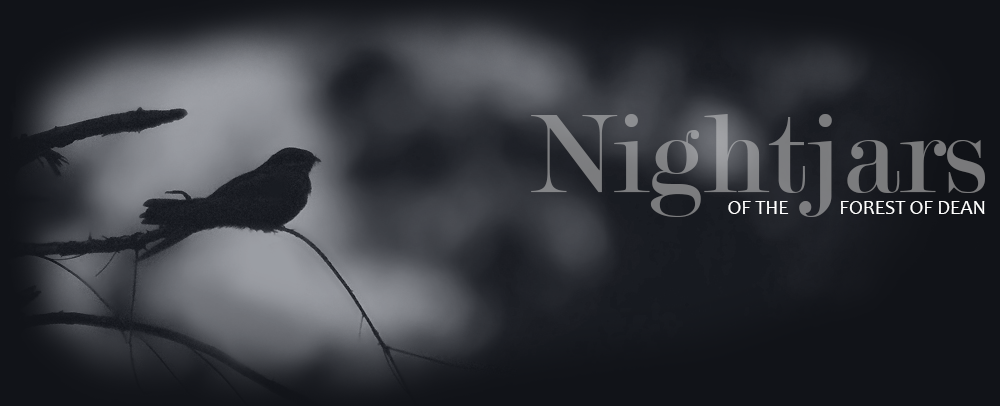First published at https://www.benlocke.co.uk/2020-nightjar-season-summary-part-2/.
Part 2 – July-August
During a few days toward the end of June I spent a bit of time at a site that used to be my favourite place to watch Nightjars. It’s where I first started watching them properly. I’d never managed to find a nest at this site though. Over those few days, I’d managed to find both the male and the female roosting in the daytime on two occasions. In one place I found some tiny fragments of Nightjar egg shell. I can only assume this was a failed first brood as there definitely weren’t any youngsters nearby. I did even consider that it might be the site of a successful nest from the previous year but the droppings near to it were definitely from this season.
July started off well, with me eventually finding a nest at the above site on the 1st of the month, complete with two eggs. I installed a camera at the nest for some close-up footage, and also a wider camera watching over the general area. Like all ground-nesters, nightjars are particularly susceptible to predation, so I wanted to see what the wider view might reveal. The wide camera was actually a big disappointment as far as capturing the nightjars was concerned. The trigger speeds must have been just that bit too slow, as not once did it capture a bird arriving or leaving the nest. It did, however, capture this lovely Roe fawn which somehow managed to put all four feet right in the nest without damaging the eggs. About five hours later it came back in the opposite direction and did the same thing again. The following day a Roe buck did the same. That the eggs survived is down to pure good fortune and the first chick hatched at 10.30am on the 13th July, the second the following day.
The vast majority of nightjar sites in the Forest of Dean are clearfell sites of various ages and stages of regrowth. As such, the map of territories is in a slow state of constant flux as old areas become too overgrown or re-planted trees begin to mature, while recently cleared areas begin to make themselves available for occupation. This year at least a couple of sites have dropped off the map, but at least two new sites have become available. One of them was discovered by one of the birds we radio-tagged relatively nearby and from then on he decided to stay there. He was a young male and although he seemed to spend all his time with a female, certainly towards the end of the season, I didn’t see any evidence that they had bred this season. The other new site also didn’t have a breeding pair this year. Instead it was used by a lonely male who alternated between his old site and the new site and sang for a female who never came. I think both sites have good prospects for next season.

This year I seemed to spend a lot less time with my camera than usual. That’s not to say I didn’t manage to photograph the occasional nightjar, and of course many, many hours of footage and stills came from the remote cameras that I installed at nests. I also spent a lot of time this year at the site where I found my second nest of the year. Once the two chicks fledged they quickly found new places to roost during the day. Finding them became a daily challenge as the site is absolutely huge and they were picking locations seemingly at random for a while, sometimes roosting together, but more often singly. Locating roosting nightjars is a slow process!

By the end of the season four birds had been radio-tagged, and around ten had been ringed and DNA swabbed. This is a smaller number than usual due to our late starting date as a result of Covid-19. Nevertheless, with all of the data amassed by roughly 1000 hours of audio recordings, over 100 visits in the field and countless hours of trail camera footage, the season feels like it has been as successful for us as we could have hoped under the circumstances. For the nightjars themselves, there have been nest failures and successes as always, some territories have been lost and new sites have been gained.
I must admit I still haven’t finished going through the statistics to come up with an estimate of the number of birds in the Forest of Dean this year, but it’s been so long that I wanted to get something published here anyway. The eventual numbers will be submitted to the county recorder and the BTO, and hopefully I’ll remember to put them up here too.

